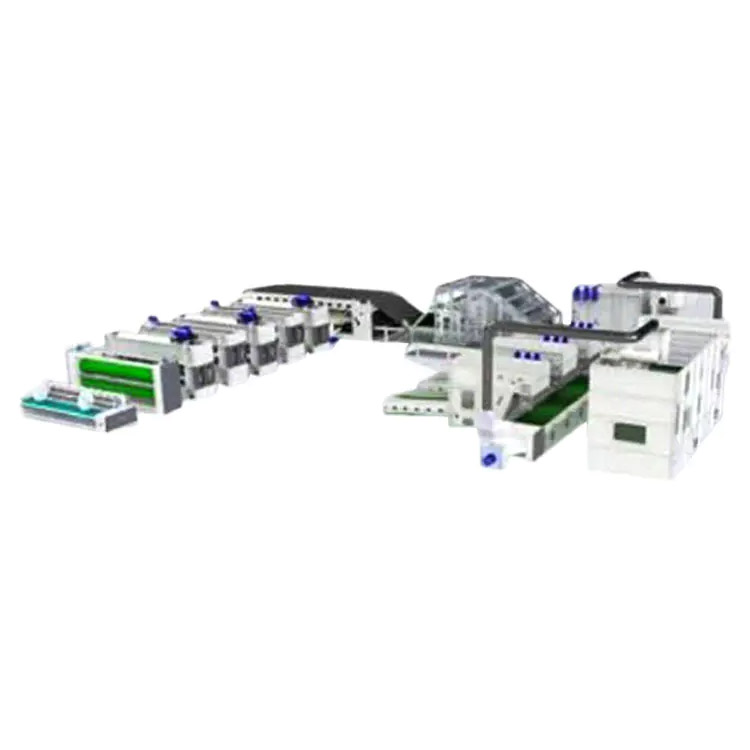How is spunbond non-woven fabric manufactured?
2024-06-18
Spunbond non-woven fabric is a type of material made using spunbond technology, a manufacturing process that involves extruding filaments, laying them down in a web, and bonding them to form a fabric. Here’s a detailed overview of the manufacturing process:

1. Polymer Feeding:
- Material Selection: The process begins with feeding raw polymer granules into an extruder. The most commonly used polymers are polypropylene (PP), polyethylene (PE), and polyester (PET).
2. Extrusion:
- Melting: The polymer granules are heated and melted in the extruder to form a viscous polymer melt.
- Spinning: The molten polymer is then forced through a spinneret, a device with numerous small holes, creating continuous filaments.
3. Drawing:
- Cooling: As the filaments exit the spinneret, they are rapidly cooled using air jets or water to solidify them.
- Drawing/Stretching: The filaments are stretched to orient the polymer molecules, increasing the tensile strength and reducing the diameter of the filaments.
4. Web Formation:
- Laying Down Filaments: The continuous filaments are laid down randomly onto a moving conveyor belt, forming a loose web. This process is often assisted by air jets that help to evenly distribute the filaments.
- Overlapping Layers: Multiple layers of filament web may be deposited to achieve the desired fabric weight and thickness.
5. Bonding:
- Thermal Bonding: The web of filaments is passed through heated rollers or a hot air oven to bond the fibers together. The heat causes the filaments to partially melt and fuse at the contact points, creating a coherent fabric.
- Chemical Bonding (Optional): In some cases, chemical binders or adhesives may be applied to enhance bonding. However, thermal bonding is more common in spunbond manufacturing.
- Mechanical Bonding (Optional): Additional mechanical methods, like needle punching or hydroentangling, can be used to further entangle the fibers and improve the fabric's strength and integrity.
6. Finishing:
- Calendering: The bonded fabric is often passed through calender rollers to improve surface texture, thickness uniformity, and tensile strength.
- Treatment: The fabric may undergo various treatments to enhance specific properties, such as water repellency, flame retardancy, anti-static, or antimicrobial finishes.
- Cutting and Winding: The finished non-woven fabric is then cut into desired widths and wound into rolls for storage and distribution.
7. Quality Control:
- Inspection: Continuous monitoring and inspection are conducted throughout the process to ensure consistent quality and to identify any defects.
- Testing: Samples of the fabric are tested for properties like tensile strength, elongation, weight, thickness, and other performance characteristics.
Applications of Spunbond Non-Woven Fabric:
- Medical and Hygiene Products: Used in the manufacture of disposable surgical gowns, masks, caps, and diapers.
- Agriculture: Employed as crop covers, weed control fabrics, and ground covers.
- Home Furnishings: Utilized in mattress covers, furniture linings, and carpet backing.
- Packaging: Used for making reusable shopping bags, protective packaging, and gift wraps.
- Construction: Applied as roofing underlayment, house wrap, and insulation facing.
Advantages of Spunbond Non-Woven Fabric:
- High Strength and Durability: Due to the continuous filament structure and bonding process.
- Lightweight: While maintaining good mechanical properties.
- Uniformity: Even distribution of filaments and consistent fabric weight and thickness.
- Breathability: Allows air and moisture to pass through, making it suitable for hygiene and medical applications.
- Cost-Effectiveness: Efficient production process leads to lower manufacturing costs.
The spunbond process is a highly efficient method for producing non-woven fabrics, offering versatility and cost-effectiveness for a wide range of applications.


